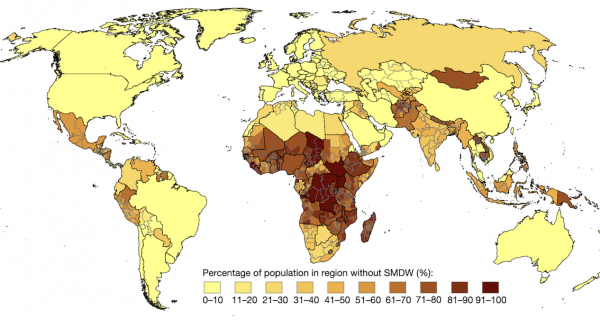Unlocking the Potential of Edible Fungi: A Sustainable Food Source and Climate Solution
By injecting a type of edible fungi called ectomycorrhizal fungi (EMF) into the roots of tree planting stock, it is possible to reduce conflicts between food production and forestry, and enable well-managed forestry plantations to contribute to the production of protein and calories. This technique can also potentially increase the amount of carbon that is stored in the trees.

The demand for more agricultural land is causing a rapid increase in deforestation, which is causing many problems around the world. However, there is a potential solution that can help reduce the conflict between food and forestry land use. This solution involves inoculating the root system of tree planting stock with a type of edible fungi called ectomycorrhizal fungi (EMF). By doing this, appropriately managed forestry plantations can contribute to protein and calorie production while potentially increasing carbon removal.
A recent study has shed light on the potential of edible mycorrhizal fungi (EMF) cultivation as a tool to mitigate climate change and address global food security issues. The research estimated the potential of EMF cultivation by integrating production figures with current data on greenhouse gas (GHG) flux of wooded systems.
Paul W. Thomas and Alistair S. Jump found that for each kilogram of EMF protein produced, the GHG flux ranges from 526 to -858 kg CO2e y−1. Compared to other food items, EMF production can present a net removal of GHG during production. The slight problem is that the land-use figures for EMF cultivation are higher than all food production categories, aside from beef production.
The study further explored the potential scale of EMF cultivation and found that current per-country afforestation rates, combined with yield data and nutritional calculations, present a missed opportunity in terms of food production. The afforestation activities of China for the period 2010 to 2020 could have set in place a production system capable of enough calorific output to support 4.6 million people annually. Globally, with annualized planting rates of 4.7 million hectares, this presents a missed opportunity for enough calorific output to feed up to 18.9 million people, annually.
The study highlights that EMF cultivation provides additional ecosystem services, GHG-efficient food production, and reduces the food-forestry land-use conflict. However, the technology is nascent, and more research is needed. Nevertheless, with such stark global potential, urgent action is needed to pursue such options. The study calls for policymakers and research, funding, and development agencies to help make such options a reality.
In conclusion, the study presents EMF cultivation as a promising tool to mitigate climate change and address global food security issues. The potential of EMF cultivation needs to be explored further, and policymakers and researchers need to collaborate to make this a reality.






































